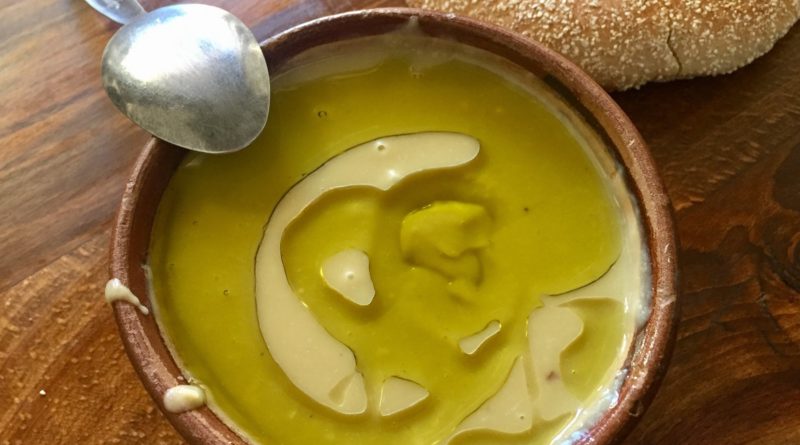Moroccan cuisine’s answer to cold winter
Moroccan cuisine is almost synonymous with two dishes Tagine or Couscous. Yet naturally there is more to the world famous cuisine than these two dishes. During the cold and harsh winter in many Moroccan regions, one dish comes to the rescue. Bissara, Baysar, Tamarakt, Tamrikt are just few names of the same simple soup. One may ask, how to prepare bissara? Well, very simple, bissara is prepared almost using one ingredient: dried peas beans.
How to prepare bissara?
Bissara (pronounced like bee sara) is an economical meal, easy to prepare, and rich in proteins. The preparation is as simple as boiling the dried beans in water over a low heat and then using a spoon, fork (or mixer) to make a soup with a smooth consistency.
There are some special touches that vary from a region to another. The variations depend on which spices to use such as cumin, garlic, ginger, salt, and pepper. Yet one other ingredient is common and a must have which is olive oil.
Nutritional value of Bissara
In the cold and long nights of winter, the soup helps the body to resist the cold. Since Bisara is rich in proteins, fiber, and slow digested carbohydrates, as well as fats derived from olive oil. It is also rich in in potassium, magnesium, phosphorous and B vitamins. The vegetarian proteins are also a good replacement for animal derived proteins.
Here is a video on how to prepare bissara
In Morocco, Bissara is typically served in shallow bowls or soup plates, and topped with olive oil, paprika, and cumin. Bread is sometimes eaten dipped into the dish, and lemon juice is sometimes added as a topping.
Bissara is not exclusive to Morocco as it a soup widely known in the Maghreb cuisine across Algeria, Tunisia, Libya and Mauritania. Bissara is also popular in Egypt and Palestine.
